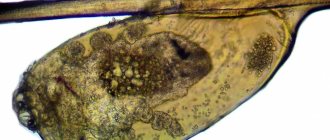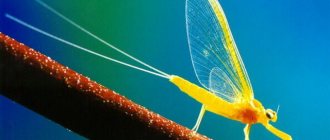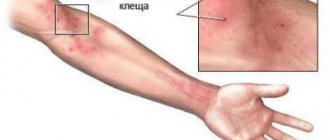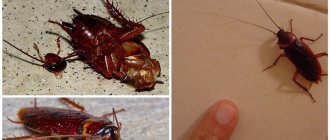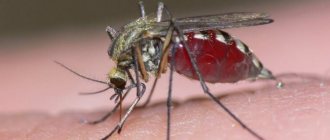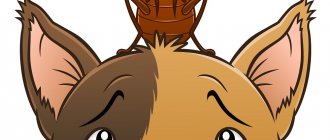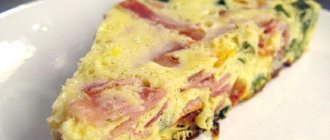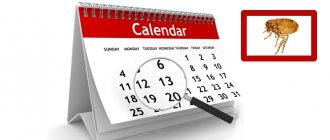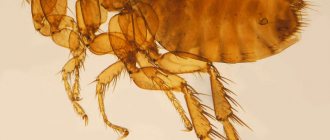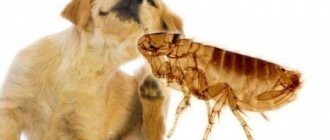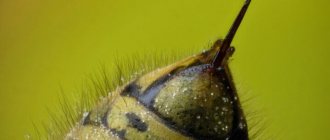The process of reproduction and development of lice occurs very quickly. Only 14-16 days under suitable conditions will be needed for the emergence of an adult from the moment the egg appears.
If the conditions for the development of the parasite are not so comfortable, it may take a month instead of a couple of weeks to reach the adult phase.
What to do in such a situation? To get started, we recommend reading this article. This article describes in detail methods of controlling parasites. We also recommend that you consult a specialist. Read the article >>>
In general, the life of lice goes through the following stages:
- An adult female lays 2-5 eggs at a time, which she firmly “glues” to the hairs at some distance from the scalp. The reliability of this attachment is ensured by the adhesive shell in which the egg is enclosed. These are nits. Outwardly, they may resemble dandruff, but if you try to remove them from the hair, you will encounter certain difficulties due to their secure attachment. In the nit stage, the louse develops from 5 to 8 days.
- After emerging from the egg, a small individual is born, conventionally called a larva (in the usual sense, the larva of any insect should not be outwardly similar to the imago), in general exactly the same as an adult insect, but much smaller and with a still underdeveloped reproductive system. After the first meal (blood), the larva molts for the first time and becomes a nymph. It takes about 5 days for the first instar nymph to develop.
- Lice nymphs go through three stages, corresponding to the number of moults. The molting of nymphs occurs because the chitinous cover does not grow with the body of the parasites, over time it becomes “out of size”, and the insect has to change it.
- After the third change of chitinous cover, the insect enters the adult stage. The adult female mates almost immediately and lays eggs just a day later (and sometimes only a few hours later). During her life, on average, she is able to lay from 80 to 140 eggs, which indicates the high fertility of the parasite. From 30 to 42 days is how long a louse (adult) lives.
Now it’s easy to calculate how long lice live: it takes on average 2 months from the appearance of the eggs to the end of the parasite’s life.
Can a head louse survive outside of humans?
There is only one answer to the question of where lice (head lice) live: humans are the only creature on which these parasites can live. Sometimes they settle on some species of monkeys, but they feel uncomfortable there.
How long do lice live outside the head? Situations may occur when, for some reason, the parasite is separated from its “carrier” (it is combed out, remains on personal hygiene items, etc.). Thus, if the louse does not have the opportunity to return to the human head as soon as possible, it will be left without food. This is enough to last another 1-3 days, and that’s all how long lice live outside a person, after which they die of starvation.
Interesting! Lice spend their entire life cycle - from egg to death - on humans, and as long as a louse lives, it feeds on human blood. Without food, the parasite will not last long.
Regarding the survival of parasites outside their usual environment or where lice live other than the head, there are a number of frequently asked questions:
- Is it possible for lice to live without a person, for example, on another animal? The head louse is not capable of living anywhere in nature except on the human head (except for rare cases with monkeys, which have already been mentioned). Therefore, it is impossible to infect your pets with these bloodsuckers or become infected from them yourself.
- How long do lice live on clothes? It happens that a combed louse ends up outside the head, for example, on clothing, where its lifespan will also average 2 days. But to a greater extent, this question applies to body lice, which live on clothes (in seams and folds), “visiting” the human body for food.
- Can lice live in pillows? To live is not, but to exist for a few hours is quite possible. Lice can end up on a pillow if they crawl onto it from the head of an infected person. Having remained there, the parasites will hold out for some time, waiting for the person’s head to fall back onto the pillow, after which they will return “to their homeland.” Therefore, to the question of whether lice live in bed linen in general and on pillows in particular, there is only one answer: even body bloodsuckers, not to mention head lice, are incapable of this, due to the periodic long absence of a person in bed.
- Do lice live on colored hair? Modern hair dyes often contain hydrogen peroxide, which is already toxic to lice. Many individuals may die, however, a sufficient number of individuals (especially nits) will remain alive, so hair coloring cannot be called widespread bullying. The surviving parasites will continue to actively reproduce, and the pointlessness of destroying them in this way will be obvious.
Appearance Features
You can see the body structure details common to all types of human lice; they do not differ significantly from each other.
- Despite the lack of eyes, this insect is photosensitive. A well-fed parasite will try to hide from the light, but a hungry one, on the contrary, will come out.
- The olfactory organs of lice are small antennae, with the help of which the parasites find their prey. Recent scientific research has shown an interesting fact. Household, human lice select a host based on their scent preferences, that is, by smell. Therefore, there are people who are not afraid of these parasites; lice are not attracted to their body odor.
- Having sensed a suitable body odor, the parasite can feed all day long; day or night does not matter to them. They do not have a rest period, like bedbugs, which feed on human blood only at night.
- The mouth of this parasitic insect is a small retractable proboscis, sharp enough to bite through the skin. The body of an insect can be roughly divided into the head and abdomen.
- The species of these parasitic insects belongs to the winged insects, but in the process of evolution the wings became very small in size, because lice feel great without them.
We suggest you read: How many wings do cockroaches have?
Lice lifespan
In order to understand how long lice can live, let’s first remember the life cycle of a lice from the moment the nit forms.
Fact. In science, it is believed that lice do not have a larval stage of development. Therefore, the first stage is the formation of a nit egg, in the shell of which there is a louse embryo.
Under favorable conditions, the nit stage lasts 5 days. Next comes the stage of nymphs - young lice, already very similar to adult individuals, but not yet capable of reproduction. In total, the nymph experiences three molts, which are necessary to form a larger shell. The nymph needs about 3 days before the first molt, then another 5 days pass, after which the parasite molts a second time. Before the third molt you need to wait a little more than a week - 8 days. After the last change of shell, already on the first day the female lays her first nit. Adult ectoparasites live from 30 to 42 days. During this time, the head louse lays up to 140 nits, the pubic louse – only 50, and the body louse – as many as 300 eggs of the new generation. The more sexually mature adults there are in the hair, the faster mating occurs, which means more nits are formed.
Terminology. Imago is the stage of an adult insect of an arthropod species that has a complex stage of development. At the imago stage, insects are capable of reproduction and settlement, but are no longer capable of development and growth.
Realizing the speed of development and reproduction of lice, it becomes clear how important it is to start treatment on time and stop their development. Lice quickly develop and reproduce in the following favorable conditions:
- The source of food, which is a person, is always nearby. An adult feeds once every 3-4 hours. When released into the outside world, outside the human body, the head louse lives no more than 3 days. Pubic louse is less hardy - death from hunger occurs within 10 hours;
- the most favorable temperature for lice to live is human body temperature, fluctuations should not exceed 10 degrees Celsius;
- lice cannot live without air, so its absence leads to their death within a few days. This is used when killing body lice - things are folded into a thick plastic bag and tied securely. The knot is left for a couple of weeks, after which the dead lice bodies are simply shaken off.
When comfortable environmental conditions change, lice slow down in development, reproduce more slowly, or stop doing so altogether.
People often wonder: Where do lice live? Everything is very simple: the head and pubic hairs live exclusively in the hairy area of the human body, and the body parts live in clothes. Head lice are also known to occur in some species of monkeys. It turns out that the ectoparasite cannot live outside the human body. If they lose their host, they die within a few days.
Interesting. Ectoparasites can live on the surface of the water for two days, waiting for a new host to appear. Clothing insects are especially hardy to such conditions - they can swim and can survive in water for more than two days if the temperature is comfortable for them.
How to get rid of linen lice
It is easier to remove linen lice than head lice, since they do not live directly on the human body. The first thing you need to do is take a hot shower, preferably using laundry or tar soap, this will help get rid of the pests that have moved onto the body to “lunch”. Then you can begin to fight the remaining parasites, guided by three principles.
- Speed. Were you able to recognize the lice? We need to start eliminating them as soon as possible to prevent the population from increasing.
- Scale. Treat not only those items on which parasites were found, but also all clothing, bed linen, towels, curtains, and furniture. Wash hard surfaces with a strong solution of laundry soap, soda or vinegar.
- Medicines. A doctor will help you cure vinegars. Typically, the patient is prescribed external use of antiseptic drugs in the form of creams and ointments and oral antihistamines to prevent allergies.
To treat the body, instead of soap, you can use special anti-pediculosis shampoos: Veda-2, Medifox, NOK, Lauri. Due to toxicity, the use of such products has contraindications; it is recommended to carefully read the instructions.
Basic methods
The easiest way to get rid of insects is to wash items in hot water, rinse in a weak bite solution, dry in the sun, do not wear for a week, then wash again. Here are five more remedies for linen lice.
- Kerosene soaking. Soak things in a 20% solution of laundry soap and kerosene for half an hour. Wash in a washing machine, rinse in vinegar solution, dry in the open air.
- Boiling. If the material allows, boil linen and clothes for 15-30 minutes, and then wash in the usual way. To enhance effectiveness, add shavings of tar or laundry soap to the water.
- Freezing. Pack things in plastic bags and put them in the freezer for three days. In winter, hang products on the balcony.
- Herbal soak. Soak things for several hours in a decoction of wormwood, tansy or milkweed. To prepare the product, you need to pour boiling water over the raw material (two tablespoons per liter of water), cook for five to ten minutes, and filter.
- Suffocating "chamber". Treat products with DDT (insecticide - a product used to control insect pests) or pyrethrum powder, tie them in plastic bags and leave for several hours, wash in a washing machine, dry in the open air.
The listed means get rid of adults and larvae. High temperatures, which are detrimental to them, will help overcome nits. All items must be thoroughly ironed with a hot iron or treated with a steam generator.
Pillows, blankets, mattresses, blankets, carpets, rugs and other things that are difficult to wash should be dry cleaned.
Special means
Despite the effectiveness of kerosene soaking, one of the most popular folk remedies for parasites, the evaporation of this product in high concentrations is dangerous for humans, and the strong “aroma” is difficult to remove. Therefore, most often, modern drugs are used to get rid of bed lice at home. The method of using them is simple: you need to treat the product with the product, and then wash and dry, preferably in the sun. Judging by the reviews, the most effective treatment of products is with the following preparations:
- "NOK";
- "Pedilin";
- "Carbofox";
- Medifox;
- "Buzzed."
Home treatment
If the number of parasites is high, simple cleaning with disinfectant compounds may not be enough: disinfestation of the apartment is required. You can contact special services or use one of two methods.
- Steam generator. Treat all surfaces of the house with hot steam, paying special attention to upholstered furniture, baseboards, corners and crevices.
- Insecticide. Wash the entire apartment with DDT emulsion 2%, after two hours, wash off the composition with a strong solution of laundry soap. During the “procedure”, open the windows and make sure that the rest of the household leaves the apartment. Work in closed clothing, rubber gloves and a protective mask. Instead of DDT, you can use Dichlorvos.
The active ingredient in Soviet-era Dichlorvos was dichlorvos, a toxic organophosphorus compound. Currently, such drugs are not commercially available due to their proven danger to humans. Modern products called “Dichlorvos” are available in the form of sprays and contain piperonyl butoxide, permethrin or cypermethrin as active ingredients.
How long do lice live on clothes and linen?
The development cycle of the parasite from the larva to a healthy individual lasts 20 days, and the life expectancy of an adult insect is from 27 to 46 days. Without food, they can maintain their viability for a much shorter period:
- The death of a human louse occurs on the second day. When the temperature drops, the fasting period can increase to 10 days.
- The fish can maintain vital functions outside the host’s body for about 8-9 hours, and in water for no more than 2 days.
Lice development cycle
It does not take too much time for an egg to grow into an adult. On average, this will take approximately 15 days. However, if the conditions for reproduction are not very favorable, then this process can last for a month.
A louse goes through a full development cycle in 15 days.
Insect development is divided into the following stages:
- At one time, an adult female lays up to five eggs, which she firmly attaches to the hair. She chooses a place for this purpose as close to the scalp as possible, gluing the eggs with an adhesive substance present in the outer shell of the egg. It takes five to eight days for a nit to develop into a larva.
- The hatched larva resembles a small louse in appearance, but its reproductive system is still in an underdeveloped state. After the first meal, she sheds. From this moment on, the larva is called a nymph. The first stage of its development lasts about five days. Since the nymph molts three times, it has three stages of development. Molting occurs because its shell consists of chitin, so it cannot grow with it. We have to change it.
- After passing through all stages of development, the hatched larva becomes an adult. This stage is called imago. The female immediately finds a mate and begins laying eggs on the same day. Sometimes this happens literally after a few hours.
It is easy to calculate that from the moment a louse lays an egg until it dies, about two months pass. This is how long an insect lives if it exists on a human body.
FAQ
To dispel doubts and prejudices, here are a few frequently asked questions to consider.
Lice and pets: is coexistence possible?
Finding out how long lice can live outside of humans, some believe that pests, in search of food, can move to domestic animals - dogs, cats. However, numerous studies have shown that this form of parasitism is impossible for a number of reasons:
- lice eaters that live on dogs have longer stylets, specially adapted to bite through skin that is thicker than that of humans;
- Cat lice choose this type of pet exclusively for their habitat.
It is important to remember that even if the lice eaters of one of the four-legged animals land on a person’s head, they will not stay there for long and at the first opportunity they will return to a more suitable source of food
Is the bed suitable for head lice?
Bedding, no matter what material it is made from, is not a habitat for lice. The reason for this is the inability to lay nits. Of course, sometimes you can see an insect, for example, on a pillow. But it got there by accident, falling from the head, and will leave it as soon as contact with a person is available
This is why it is so important to observe personal hygiene rules if one of your family members is found to have lice.
Can lice live on lost hair?
Some people, based on the fact that lice cling tightly to hair with their paws, believe that these insects can survive on dead curls. However, such a judgment is deeply erroneous.
Hair is not a source of food for insects. They cling to them solely to prevent them from falling while moving, washing, or combing. Accordingly, cut hair that has fallen out is not of interest as a source of replenishing energy reserves.
It is convenient for lice to lay nits exclusively on long hair. That is why they extremely rarely settle on mustaches, beards, and eyelashes. Such hair is of no interest even for pubic lice, since it is too sparse and removed from voluminous, large sources of nutrition - veins and arteries.
Knowing important points about lice, you can prevent infection, and if it does occur, you can quickly take measures to remove the parasites.
How long do nits live?
After the female louse has laid larvae on human hair, the eggs must go through 3 phases of development. A nit is a cocoon containing a future louse. During maturation, it does not need nutrition, so if for some reason it leaves the host’s body, it will be able to maintain its vital functions for about 8 days before hatching from the egg. If a small louse cannot immediately find food, it dies within 24 hours
For the maturation of nits, the most important is the temperature regime. If the nit is in hot conditions, the louse may hatch after 4-5 days. This is possible when wearing hats in winter, since a kind of greenhouse conditions are created under it. Therefore, after combing your hair, you need to thoroughly disinfect the entire room.
Causes of nits
Nits appear only after an adult louse moves to an area of the human body (head, groin, armpits). Relocation can occur as a result of contact, use of things of an infected person, etc.
After infection, one female lays at least 5 eggs per day. In a month, an insect that reaches only 4 mm in length brings up to two hundred eggs, and this is not the limit. Eggs mature in 5-7 days; After hatching, the larvae become capable of reproduction within a week, and the number of nits increases several times.
How they appear
Nits appear in two cases. The first is when the female louse jumps from one host to another during close contact. And the second is when a healthy person uses a comb (hat, hair tie, hair clip) of an infected person. In the latter case, only a small part of the nits gets stuck on the hair on the head.
What they look like
All nits are covered with a sticky membrane. They are capsules attached to the hair thanks to glue and a tail, which acts as a retainer.
To help those who are faced with an unpleasant phenomenon, there are several differences between dandruff and nits:
- Dandruff is easier to remove with a regular comb because it glides along the entire length of the hair. Unlike nits, which are held on the hair surface by an adhesive membrane.
- The shape of nits is smooth and round, dandruff is irregular and heterogeneous. Nits are the same size compared to dandruff.
- Nits cannot fall on the collar and shoulders of clothing, like dandruff. They leave the head only with the hair.
- Dandruff causes mild irritation, lice causes severe itching.
- Lice lay eggs in 3 places: on the frontal lobe, on the back of the head and on the temples. Dandruff appears mainly on the top of the head.
- Dandruff does not make a dry clicking sound when pressed.
In addition, dandruff is easier to remove than lice.
Causes of lice
The problem under consideration is very relevant, because these parasites, as a rule, appear suddenly.
In fact, despite numerous myths, it is necessary to understand the main thing - lice are external parasites, and only humans can be their carrier.
Lice feed on human blood, while the “owner” himself constantly suffers from discomfort, manifested in the form of itching and pain in the affected areas.
By the way, lice can be of several types:
- pubic; pubic lice
- head louse
- body lice. Linen lice (body lice)
And if we look deeper into the problem of head lice, we can identify several main reasons.
Table. Where do lice come from?
| Public places | These are potential risk areas. A striking example would be, say, child care institutions. Children often become infected with head lice in kindergartens and schools. |
| Water | Yes, water can indeed act as a source of infection, since lice can live in it for some time. That is why it is quite possible to pick up parasites in a body of water with stagnant water, not only in a pool, but also in a rural lake. |
| Close contact | As noted above, lice can be transmitted through human interaction. This could be, for example, kissing or sexual intercourse (more relevant to pubic parasites), group games (mainly childhood infections). |
| Neglect of hygiene rules | Parasites are more often acquired by those who neglect personal hygiene and live in unsanitary conditions. |
| Long journey | The risk of infection in such cases increases. And the point here is not only that there is not always access to the simplest hygiene procedures, but also that on the road you have to come into contact with a large number of people, including carriers of lice. |
| People living together | This applies to places where large numbers of people live (summer camps, prisons, etc.). |
| Personal belongings of the bearer | Towels, combs and other items of a carrier that contain lice or nits can also be contagious. Few people know that these parasites can live without air for up to 24 hours. |
https://www.youtube.com/watch?v=oDiNUzOWk5c
Important information! According to statistics, lice most often become infected in the autumn and winter, when people spend most of their time indoors, actively contacting each other.
But, in principle, pediculosis can appear under different circumstances. So, just standing next to the carrier on public transport is enough for the parasites to crawl onto the other person’s hair.
Yes, lice cannot jump like fleas, but they crawl quickly (about 4 mm/sec), and when they get on a new “host”, they begin to actively bite him and multiply.
The incubation period of pediculosis, by the way, takes about three weeks.
How to deal with lice and nits
There are several ways to combat parasites. These can be specialized drugs or traditional methods. However, the most effective are special means - insecticides. However, their use has a number of contraindications. These are pregnancy, childhood, allergies and asthma. In such cases, milder means can be used. Or resort to natural recipes. It should be remembered how long lice live outside the human head - up to 48 hours.
Natural remedies for parasite control include:
- cranberry juice;
- vegetable oil;
- tansy decoction;
- juice or decoction of wild garlic and wild rosemary;
- cosmetic hairspray.
When these products are applied to the hair, lice and nits die, after which they are usually combed out with a comb. If you managed to comb out the louse, but it is still alive, then you should remember how long lice live outside the head. It depends on how quickly the insect hits the person again. Therefore, all combed individuals should be destroyed immediately.
What does a lice look like?
In order to be sure that a person has lice, you need to know what a louse looks like. This is a small insect, the body length of which is up to 3 mm. The louse, as a rule, is gray or brown in color, has all the body parts necessary for an insect: legs (6 pieces), abdomen, antennae and cephalothorax. Moreover, the parasite does not have wings at any stage of development. If you look at a louse without magnifiers, it resembles an ordinary grayish insect. And the insect known as the body louse is white in color. The pubic parasite is dark in color, closer to brown, and its body resembles a crab.
How to avoid lice infestation
The process of getting rid of lice is quite unpleasant, so you should follow some rules to avoid infection with parasites:
- do not use other people’s personal hygiene products for the head and jewelry (towels, combs, combs, hairpins);
- maintain hygiene;
- systematically check all family members for lice infection;
- do not wear other people's hats.
By following these simple precautions, you can save yourself and your loved ones from such an unpleasant disease as lice. After all, everyone now knows how long lice live outside the human head and body.
Diagnosis of pediculosis: how to independently detect the disease
During the feeding process, the insect injects substances under the human skin that reduce sensitivity and prevent blood clotting, so during the bite the victim does not feel pain; unpleasant symptoms appear after some time. The following symptoms are characteristic of pediculosis:
- swelling of the lymph nodes;
- constant itching;
- the appearance of pustules on the skin;
- sleep disturbance;
- irritability.
Pediculosis can be diagnosed by detecting insects. At the initial stage of the disease, there are not many parasites yet, so inspection will require a fine-toothed comb. First, comb the hair in the usual way. When the comb slides freely along the entire length of the hair, you can use a comb. It is injected deep into the hair so that the teeth touch the skin, and combed from top to bottom. Every time you need to check for parasites or nits on the comb.
It is possible to defeat parasites!
Antiparasitic Complex® - Reliable and safe removal of parasites in 21 days!
- The composition includes only natural ingredients;
- Does not cause side effects;
- Absolutely safe;
- Protects the liver, heart, lungs, stomach, skin from parasites;
- Removes waste products of parasites from the body.
- Effectively destroys most types of helminths in 21 days.
There is now a preferential program for free packaging. Read expert opinion.
Read further:
Pinworm eggs: how long they live, what they look like and at what temperature they die
Treatment of head lice and nits at home with folk remedies
How long do worms live in the human body and in the external environment, the life cycle of helminths
Worms in the human body: in the intestines, liver, head, eyes and under the skin
Lice larvae: what they look like on the head, what they are called and how to get rid of them
What lice and nits look like on human hair, in adults and children
Should you tell others about lice?
Getting rid of lice is not a problem, but getting rid of public censure is extremely difficult. A child may be bullied by classmates. Let's face it - this happens almost all the time. Employees of our sanitary and epidemiological station, who treat apartments and houses against lice, often hear stories from parents and see children’s tears. We draw one simple conclusion - confidentiality must be maintained whenever possible.
In the case of adults, everything is the same. Of course, no one will openly blame you. But the subconscious effect that a person is unsanitary will remain. It is necessary to destroy lice quietly and in a family manner so as not to disturb others.
Interesting: children are more susceptible to insect attacks. The reason is weaker immunity. By the way, alcohol, smoking and simply poor health make a person a tasty target.
